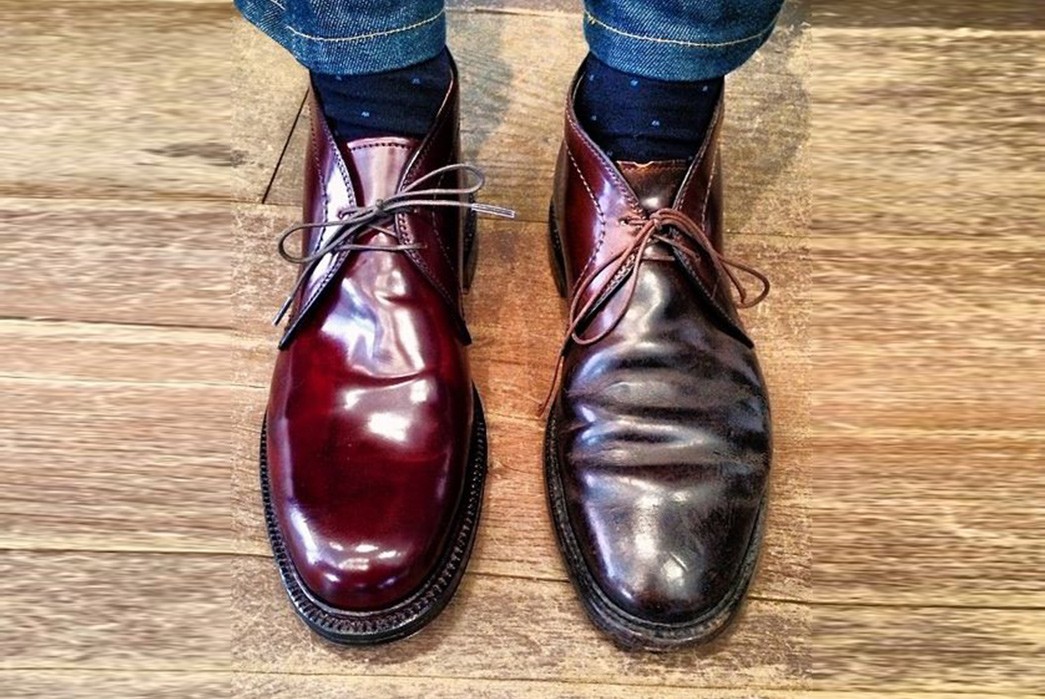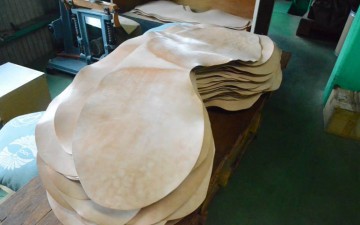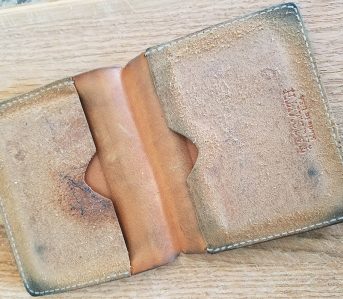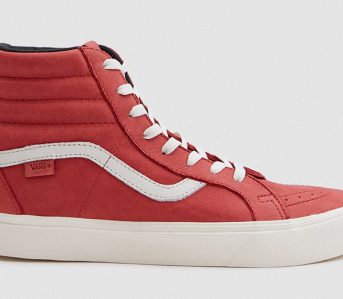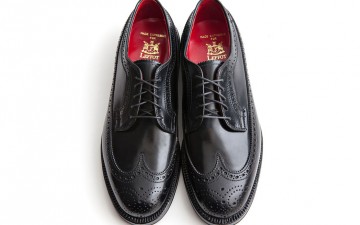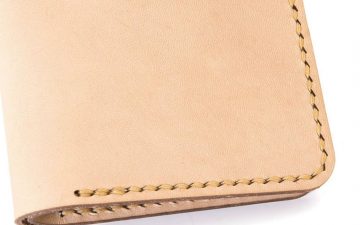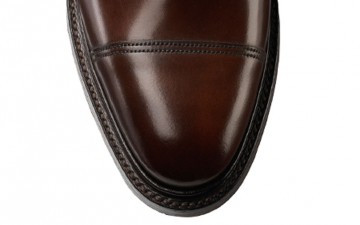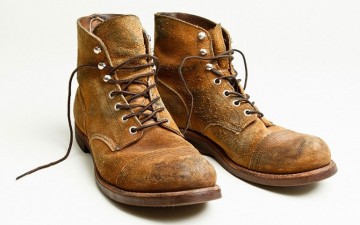Much like in Game of Thrones (why should we be the only Web site not stealing a bit of their fire?), in the land of leather, there can be but one true king.
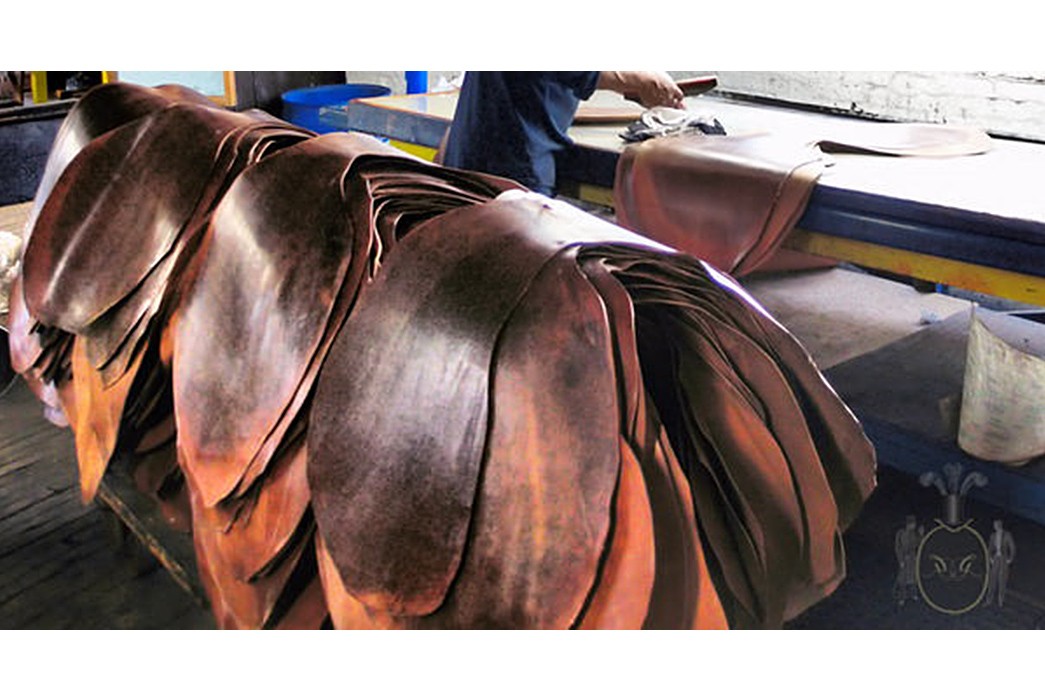
Shell Cordovan Hides. Image via Naver.
And while it remains to be seen who’ll be the last (wo)man standing…make that sitting, on the Iron Throne, I for one don’t need Dinklage whispering in my ear that I should bend a knee to Shell Cordovan, the undisputed King of Leather. Unless someone somewhere finds a real live dragon and is able to make shoes from it, shell cordovan (SC) is about as close as you’re going to get.
What is Shell Cordovan?
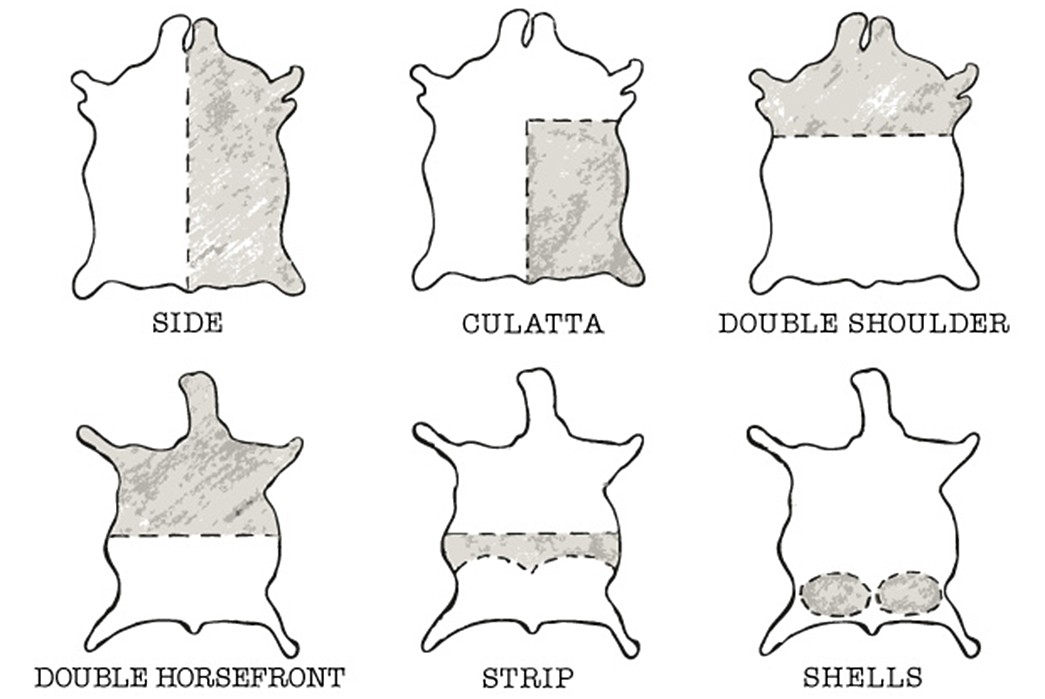
Shell’s location on a horsehide. Image via Lord Point.
The quality and desirability of SC is not opinion–it comes straight from the horse’s mouth (OK, fine…maybe a bit farther in the back). SC comes from the flat muscle (or shell) beneath the hide on the rump of a horse, a tanning practice first explored by the Visigoths in seventh century (Cordoba) Spain.
This is interesting for a number of reasons and not just because I’ve just typed the words Visigoths and “rump” for the first time in my professional career (and in the same sentence no less). Whereas most leather companies utilize the hides from the whole cow and often divide one hide into many layers, essentially getting multiple quantities of thinner, inferior quality “leather” from one hide (though none you’ll likely read about here–we’re full-grain-leather-company people), SC comes only from horses and only from one isolated section of their posterior. Suffice it to say, the supply of SC leather is much lower (like all horsehide), creating high demand with prices to boot.
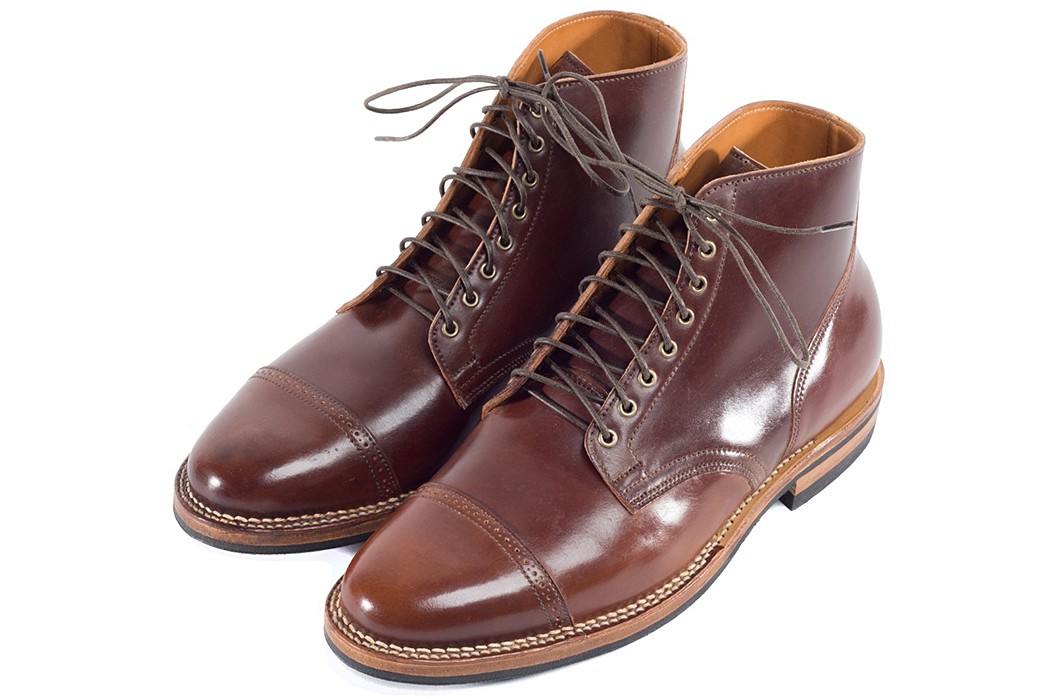
Shell Cordovan Boot by Viberg.
Shell Cordovan Products
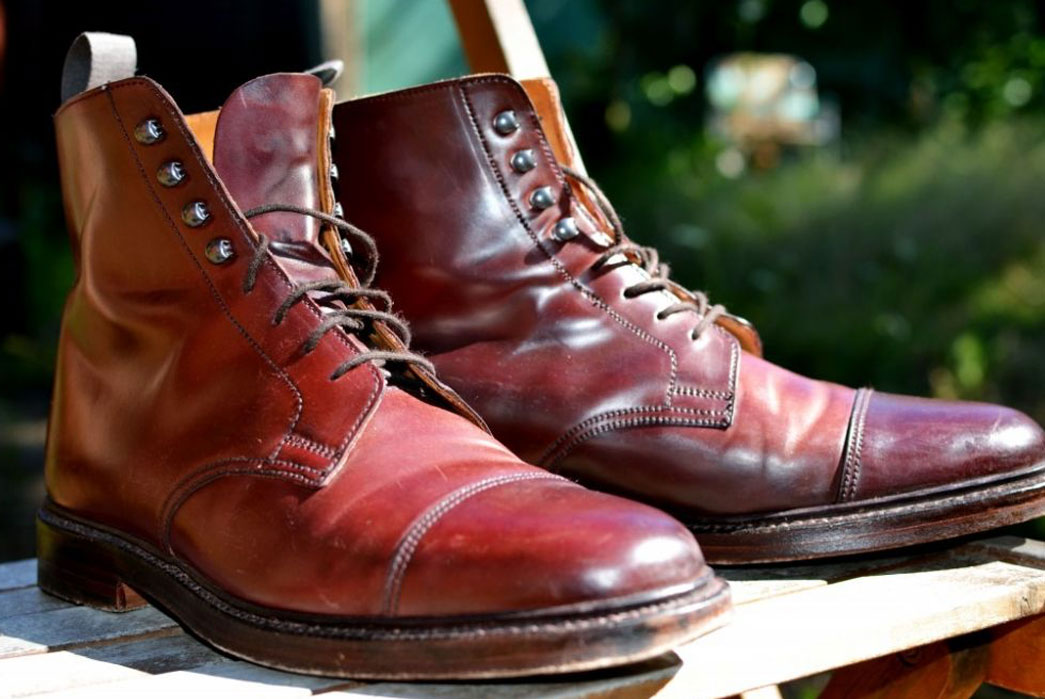
Shell Cordovan boots coming into their own. Image via GQ.
Much like 24oz Iron Hearts or a Rolex Submariner, SC leather is a rugged product that develops a spectacular patina over time. Items crafted from it command a high price, with shoes usually at least a 50% premium over other high-end leathers. Just last week, Viberg released a SC boot with a price tag of $1100…and it sold out in less than a minute! Damn.
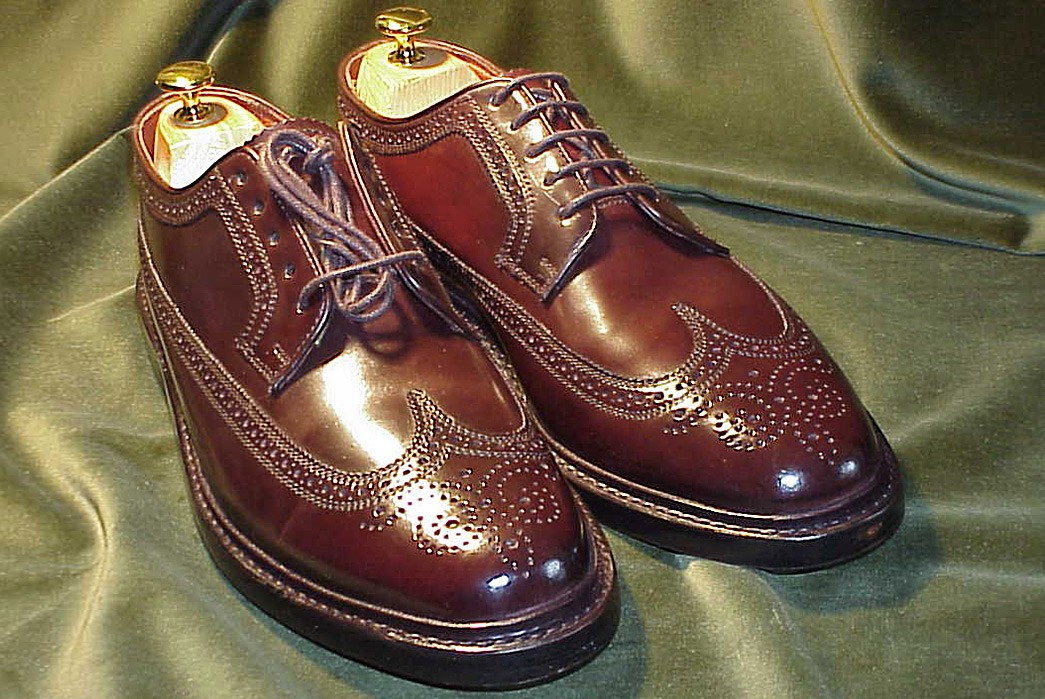
Shell Cordovan Wing Tips by Florsheim. Image via Vcleat.
I guess that’s not bad when you consider that SC is so durable (ironic that it’s almost exclusively used for non-working footwear), those Vibergs will serve their new owners for the rest of their lives, and those of their lucky heirs as well.
Fun fact: SC doesn’t crease (ever seen a horse with a wrinkly butt?), so it’s a natch match for shoes and boots. (Years ago, when I was still in college–the late’s 80’s…1980’s thank you–I bought a pair of SC wing tips from Florsheim, only to sell them on eBay after years of very heavy wear for more than I paid for them.)
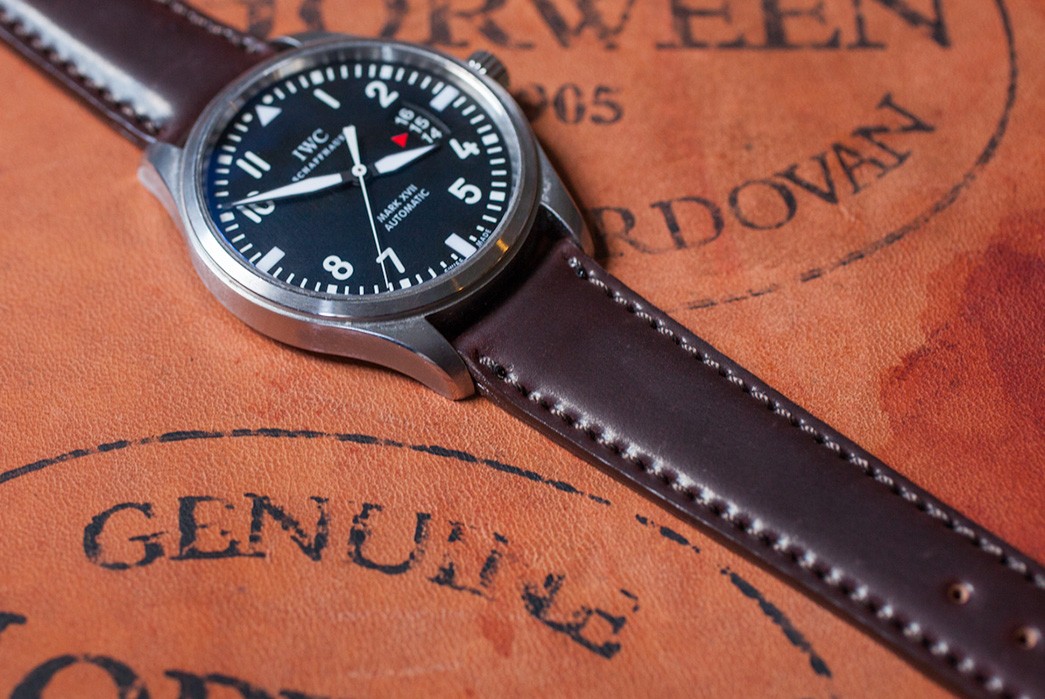
Shell Cordovan Watch Strap by Horween Leather. Image via Hodinkee.
Accessories are less common for SC, so when you do see a maker willing to give up one of Trigger’s cheeks for a bag or batch of wallets and watch straps, expect to pay dearly (and be thankful).
How Shell Cordovan is Made
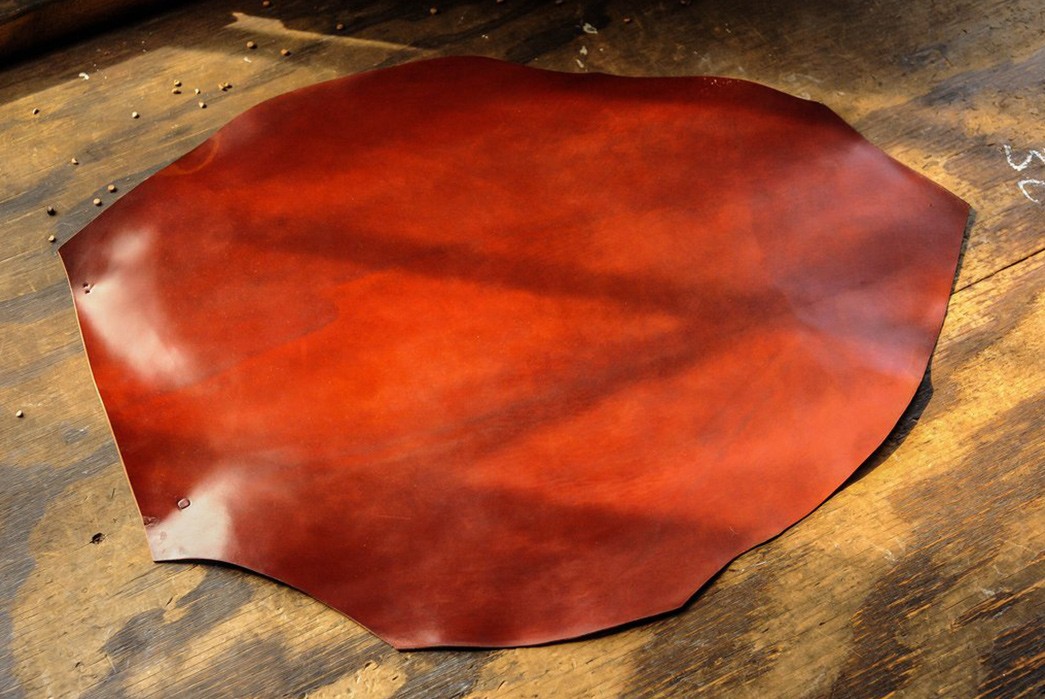
Shell Cordovan Hide by Horween Leather. Image via Horween.
Due to relatively limited supply and time consuming tanning process (more on that in a bit–brace yourself), there are only two well-regarded tanneries in the world producing SC: Shinki in Japan, and Horween in Chicago. (Yes, there are a few smaller tanneries in Italy and the UK, but Shiniki and Horween do most of the heavy lifting. Check out my chat with Nick Horween about SC and his family’s leather legacy.)
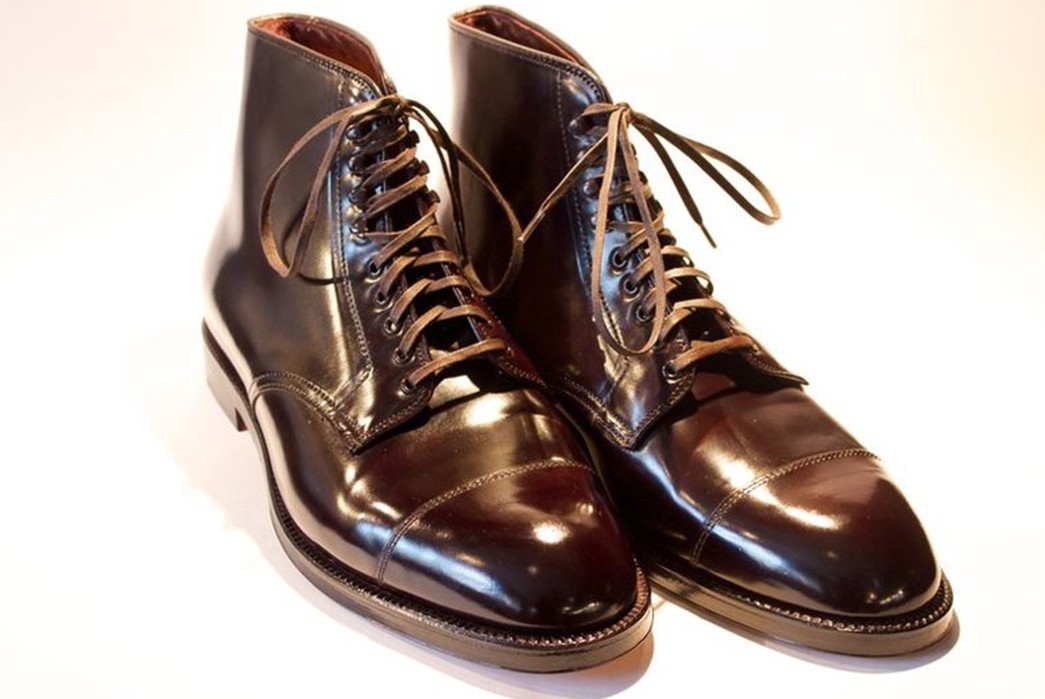
Shell Cordovan Boots by Alden. Image via Pinterest.
All leather tanning is a brutal, labor intensive process (thank you Youtube for giving me the willies), but with SC it’s even more so, and those who have perfected it are somewhat tight-lipped about their process.
It’s reputed that the SC Alden uses for its shoes (don’t try them on unless you want to buy them because once you try them on you will have to buy them) goes through a six-month tanning process, and Nick Horween confessed very little to me, other than the facts that the formula they use was developed by his great great grandfather in 1905, and they still use the exact same process today.
From Nick via Best Leather:
“Truth be told, there is a bit of magic involved. Each piece of (SC) leather is a natural product and the food-grade fats we use are also natural products. There is a science to tanning leather but sometimes it is more akin to cooking. Hot stuffing is a process done by very few tanneries in the world…technically part of a retanning process where we reintroduce fats/greases/oils to nourish the fibers of the skin. The retanning process is responsible for most of the leather characteristics in terms of tactile and other sensory qualities (look, feel, smell).
“For hot stuffing we start by steam-heating wooden drums, add retanned or veg tanned leather, and add a special blend of greases, waxes, and oils that are all propriety to Horween and mixed in house special for each product we make. Greases, waxes, and oils are pounded into the skins by the tumbling action of the heated mills. The process is specifically different from other fat liquor methods used where emulsified oils/fats are used to condition and nourish the fibers of the skin — the steam heat is not required to melt the oils/waxes/grease to penetrate the fibers.”
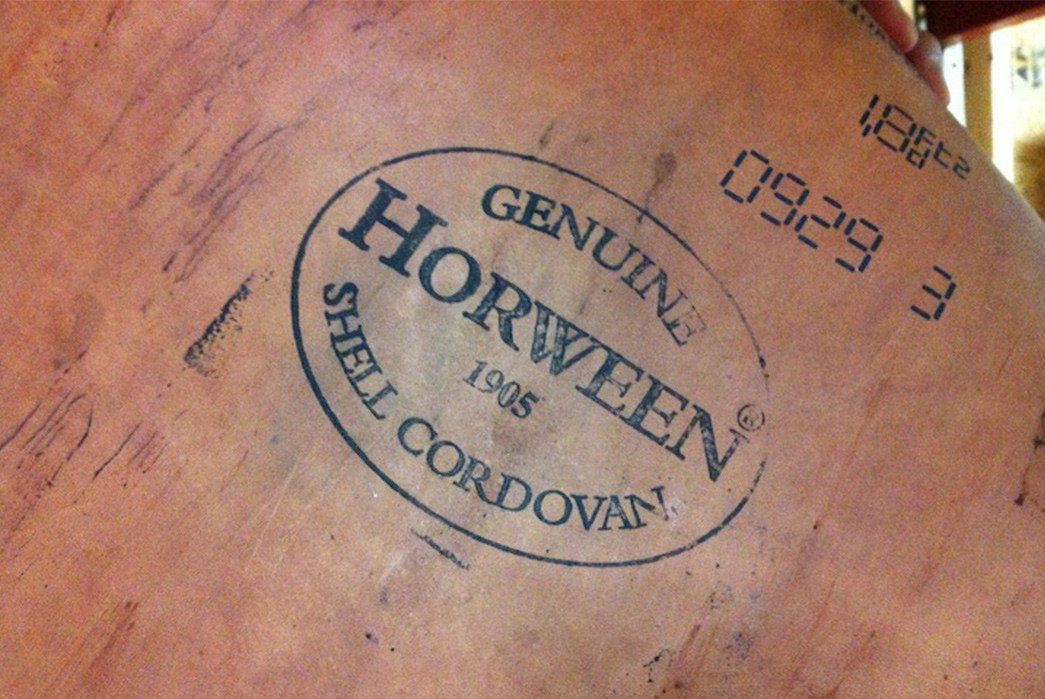
Shell Cordovan from Horween. Image via Style Ledger.
Varieties and Colors of Shell Cordovan
OK, stop thinking about it and try to strike the phrase “Hot Stuffing” from your memory. Suffice it to say that SC is in a class by itself, and if you only buy one new pair of shoes this year (and then never any other year), make them Shell Cordovans.
As for the colors this leather comes in, it’s relatively limited, and most stores tend to stock mostly a classic oxblood cordovan (aka #8) and black. But there are the others, and the names have largely been chosen by the Horween company itself. The (non-exhaustive) list as follows, with special thanks to Keikari:
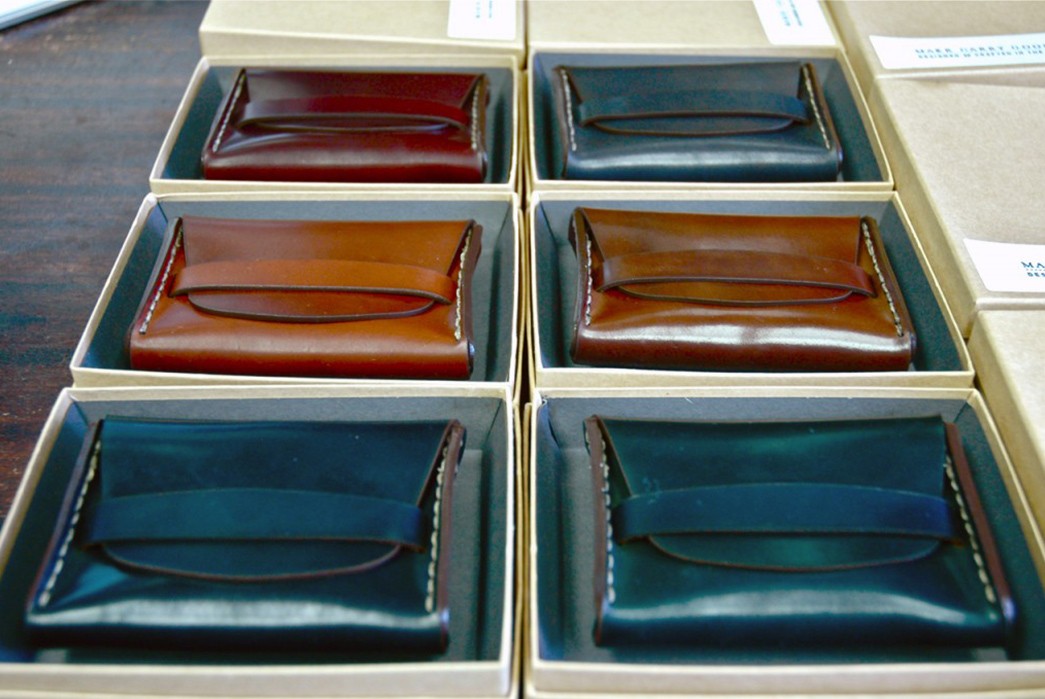
Top Left to Right: Color #4 (a very reddish brown), Gunmetal (dark and metallic grey), Ravello (medium brown) Vintage Brown (darker than Ravello but lighter than cigar), Navy, and Green
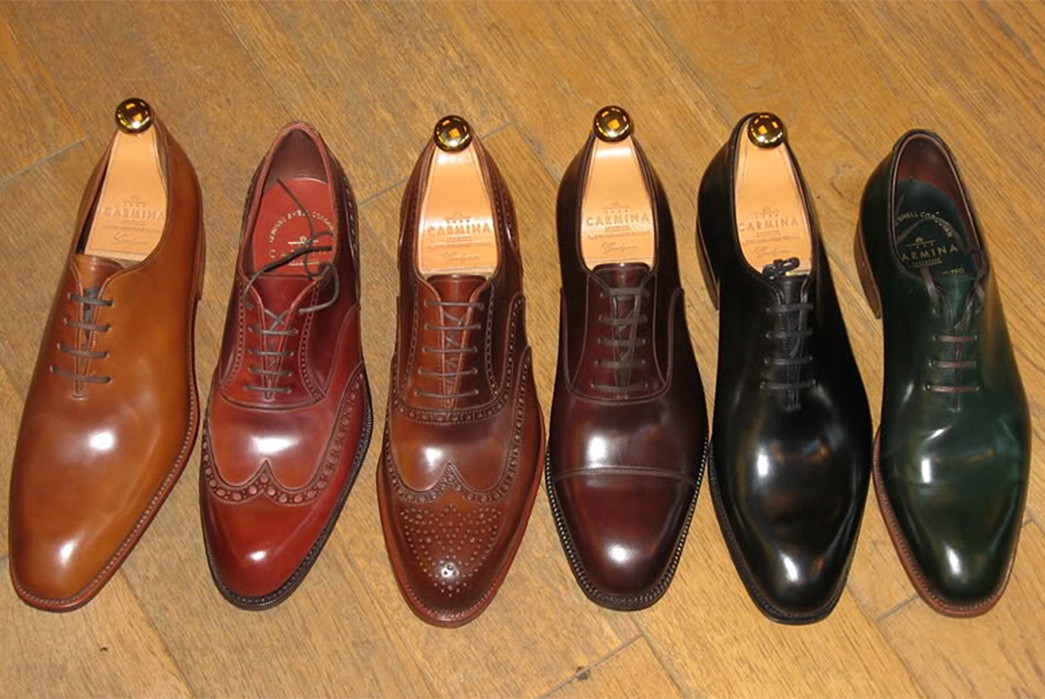
Left to Right: Saddle (very light brown), Ruby (red), Cognac (mid-brown), Burgundy, Black, Green
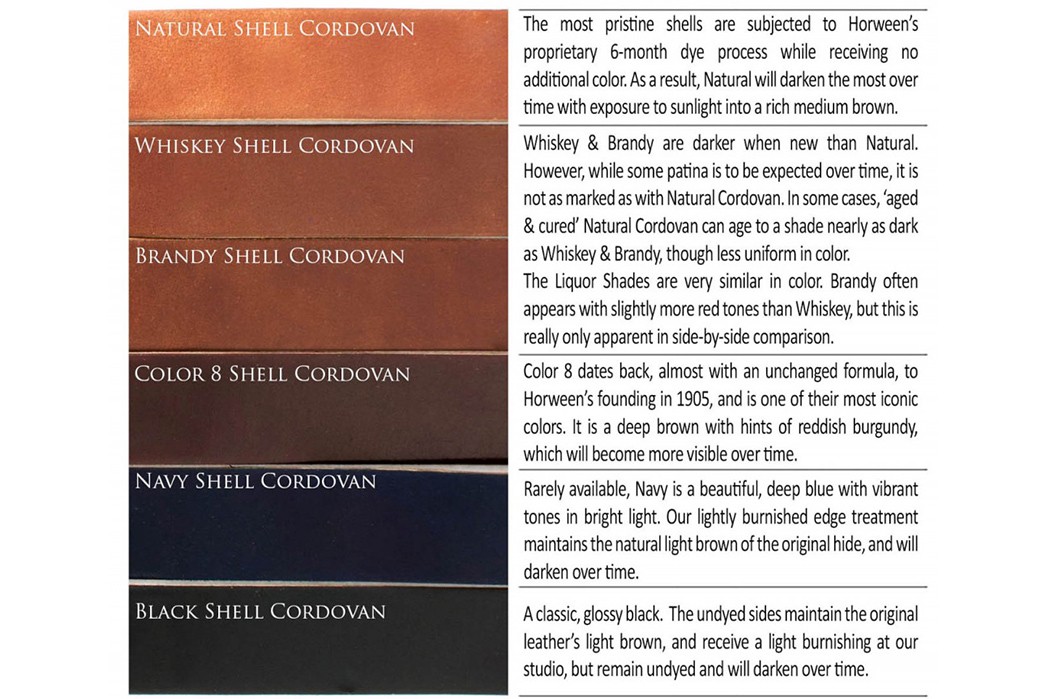
The companies making SC shoes, etc. are most of the usual suspects (Alden, Allen Edmonds, Viberg, Rancourt, Carmina, Winter Session, Tanner Goods), but with a price for the leather hides being somewhere in the neighborhood of $100 per square foot, this is not a material many mom and pops can afford to put on their shopping list.
But no matter where you get your SC goods (I vote a shoe in a classic silhouette), do yourself a favor and save up to see what all the fuss is about. Since a horse paid with its ass, it seems only fair that you pay through the nose.
Lead image via Leffot.

